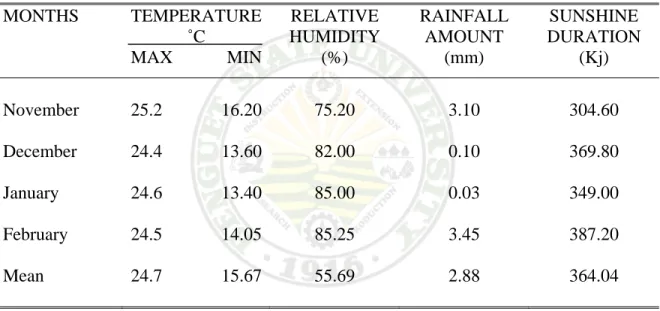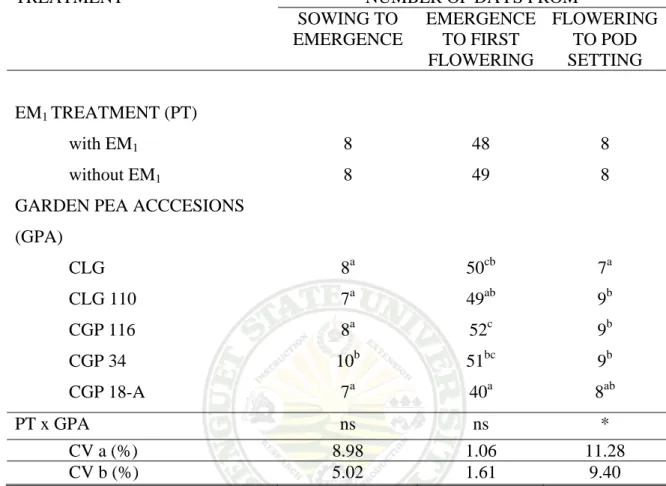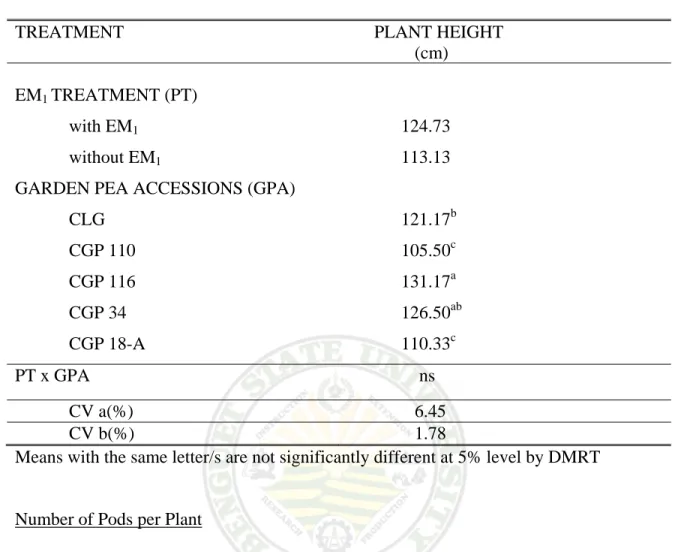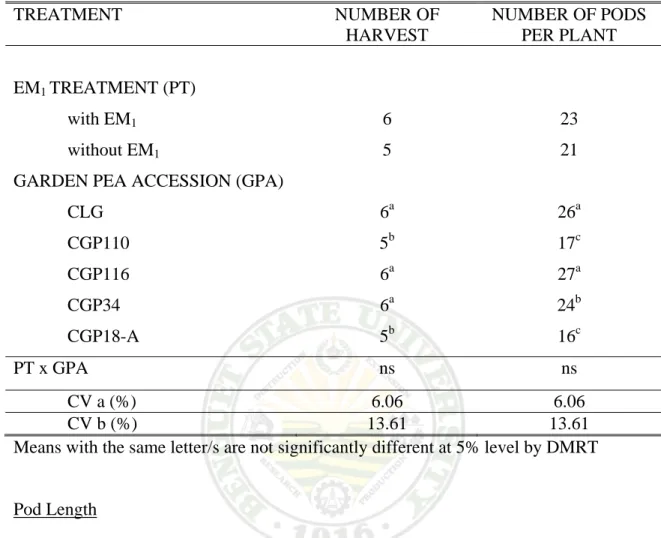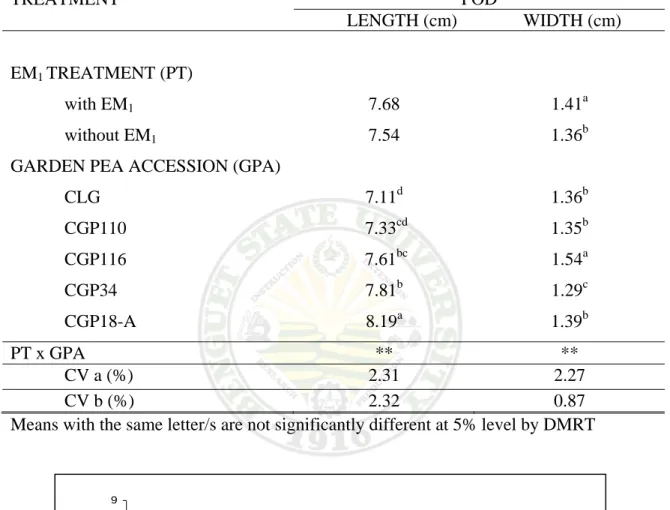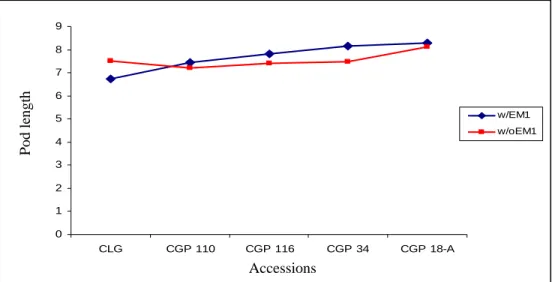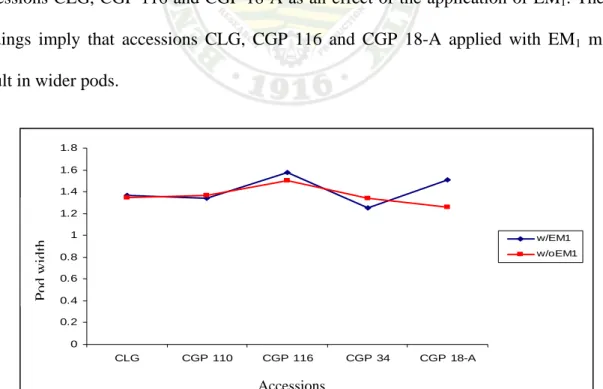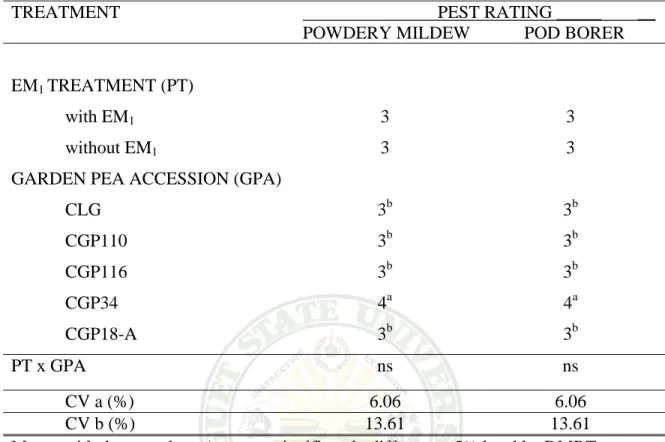In the Philippines, especially in Benguet, garden peas (Pisum sativum) are one of the best cash-producing crops. Garden peas can harbor this effective microorganism thereby increasing their population in the soil and in return improving plant growth and yield performance. The slow release of animal manure nutrients minimizes nutrient losses to the soil resulting in efficient uptake.
This was recorded by counting the number of days from emergence until 50% of the plants in the plot had at least two fully opened flowers. This was done by measuring the length of the ten sample boxes taken per treatment. This was done by measuring the width of the ten sample boxes taken per treatment.
This was taken by recording the number of pods produced from the ten sample plants per treatment at the end of the harvest season. There was a remarkable increase in the phosphorus and potassium content of the soil after the completion of the study. This noted improvement of the soil was favorable to the crop as the plant's pH requirement is between 6-7.
Temperature, relative humidity, amount of precipitation and duration of sunshine during the conduct of the study.

TREATMENT (PT) with
EM1 treatment and garden pea accessions had no significant effect on the number of days from sowing to emergence. Small differences in the number of days from emergence to first flowering of garden pea accessions were recorded. As shown in Table 3, application and non-application of EM1 to garden pea accessions had no significant effect on pod set.
Interaction effect of EM1 application and garden pea additions on the number of days from flowering to pod set. There were no significant differences observed on the application and non-application of EM1 on the garden pea accessions. There was no significant interaction between the application of EM1 and the accession on the number of harvest noted.
There was no significant difference in the number of pods produced per plant as an effect of application and non-application of EM1 (Table 5). Number of harvests and total number of pods per plant of garden peas inoculated with EM1. A highly significant interaction effect was noted on the application of EM1 and garden pea (Fig. 2).
There was a significant difference on the width of the pods as an effect of the application and non-application of EM1 (Table 6). A highly significant interaction on the application of EM1 and garden peas was noted (Fig.3). No significant interaction was observed on pod borer incidence as an effect of EM1 application and garden pea additions.
Incidence response of powdery mildew and garden pea borer applied with EM1. A significant difference was observed in the weight of marketable pods harvested as a result of application and non-application of EM1 (Table 7). The table shows that no significant change was observed in the non-marketable pods harvested as an effect of EM1 application.
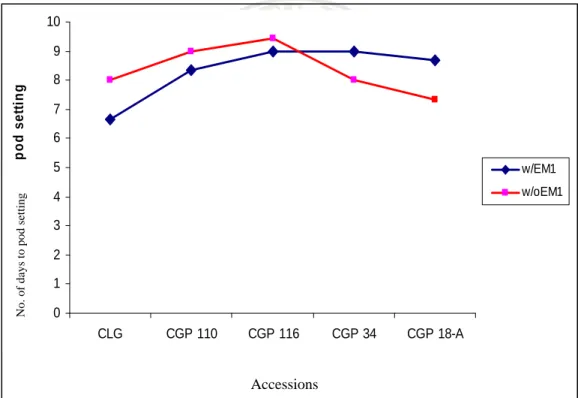
TREATMENT (PT) With
No significant interaction was observed between EM1 application and accessions with respect to their total and calculated yield.
This was due to the low marketable, non-marketable and total yield of pods produced by the accessions. Total costs include: soil preparation, seeds, the cost of composting mushrooms and the cost of gasoline used in irrigation. The study was conducted to determine growth and pod yield of promising garden pea accessions under organic production; to determine the effect of EM1 on the growth and yield of garden pea accessions; determine the interaction of garden pea accessions and EM1 application and; to determine the growth benefit of different garden pea additives applied with EM1.
CLG was the earliest to develop pods and produced the most pods per plant. Accession CGP 116 was the tallest of all accessions, had the widest pods and produced the highest marketable, non-marketable and total yield. Plants applied with EM1 had significantly wider pods and higher marketable yield than those not applied with EM1.
The result of the economic analysis showed a higher yield in the field peas used with EM1, but entailed higher total production costs. EM1 application and the field pea inputs interacted significantly only on the number of days to flowering, length and width of the pods. Application of EM1 improved wider pods and marketable fresh pod yield of garden peas.
The results showed that CGP 116 was found to be the best approach in organic production due to its wide pods, high fresh pod yield and ROCE that exceeded that of CLG (check). Production of CGP 116 with or without the use of EM1 can result in early setting and longer and wider pods. Although the use of EM1 resulted in a higher yield, growing garden peas without the use of EM1 is still more profitable.
Application of EM1 increased some beneficial effects on plant growth and yield; but it only served as an additional cost. Number of days from sowing to emergence of garden pea accessions affected by EM1 application.
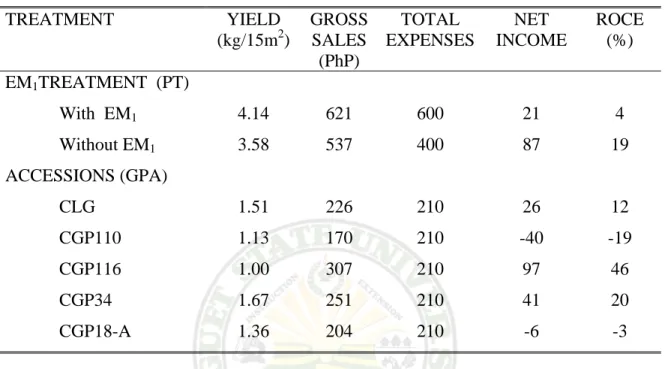
Number of days from emergence to first flowering of garden peas, influenced by the application of EM1. Appendix Table 3: Number of days from flowering to pod set of garden pea entry as affected by EM1 application. Appendix Table 5. Number of garden pea harvests affected by the application of EM1.
A) Error (a)
CLG 2. CGP 110
